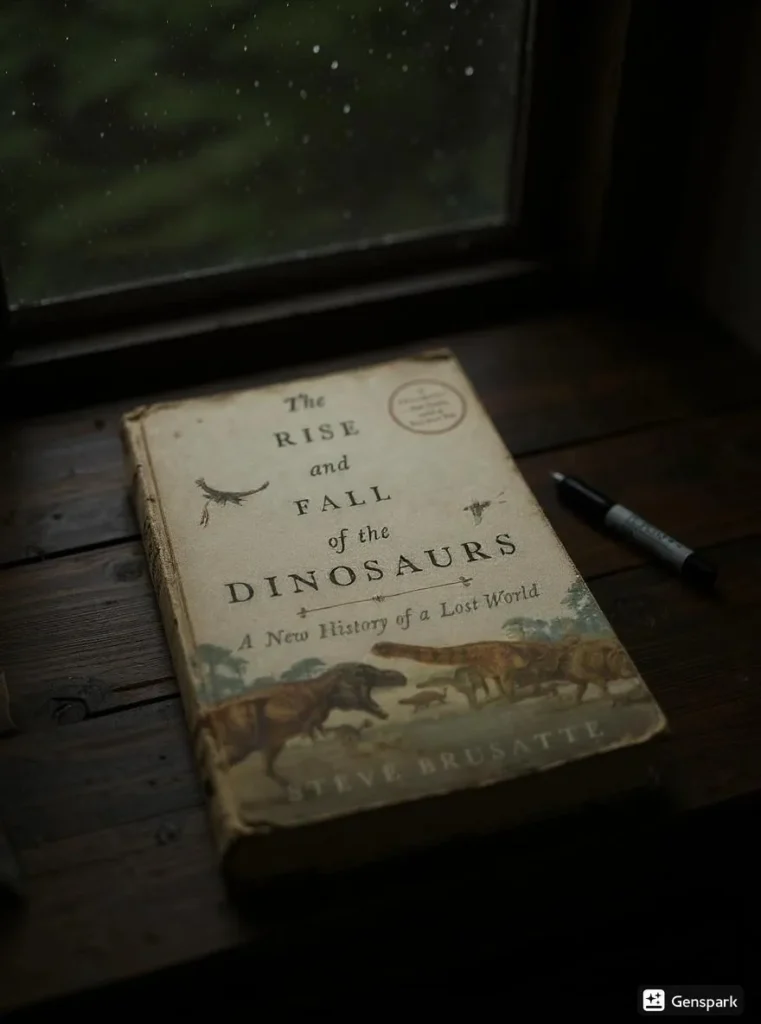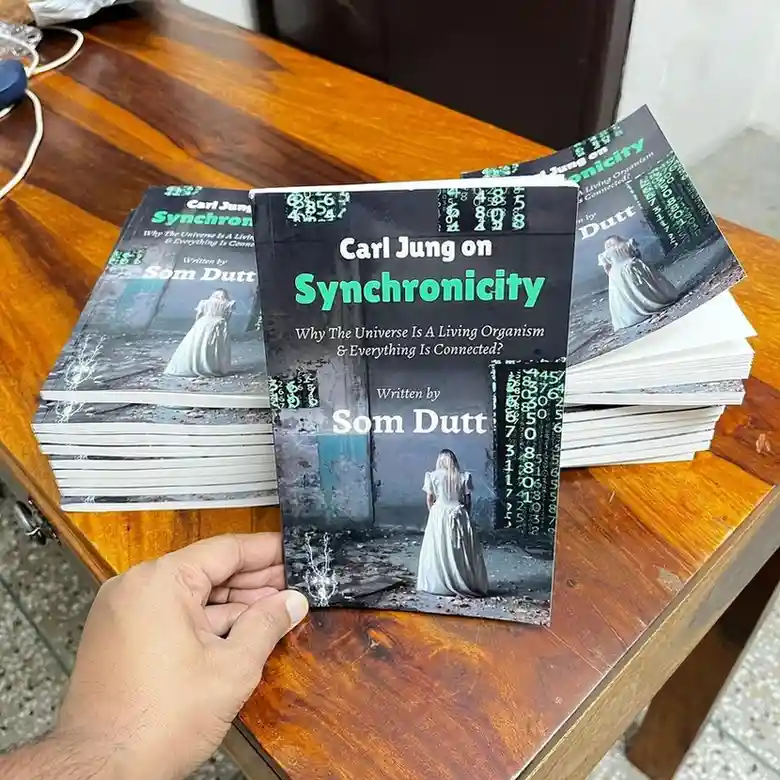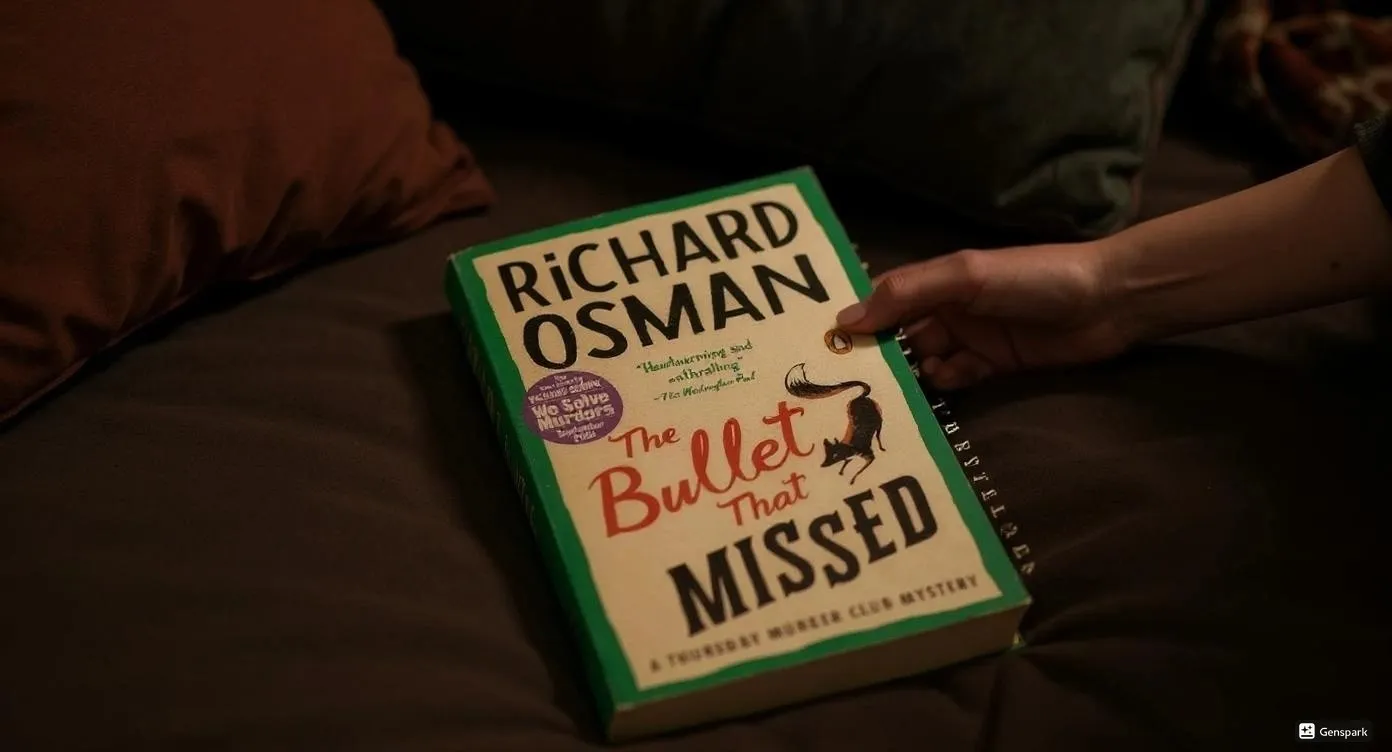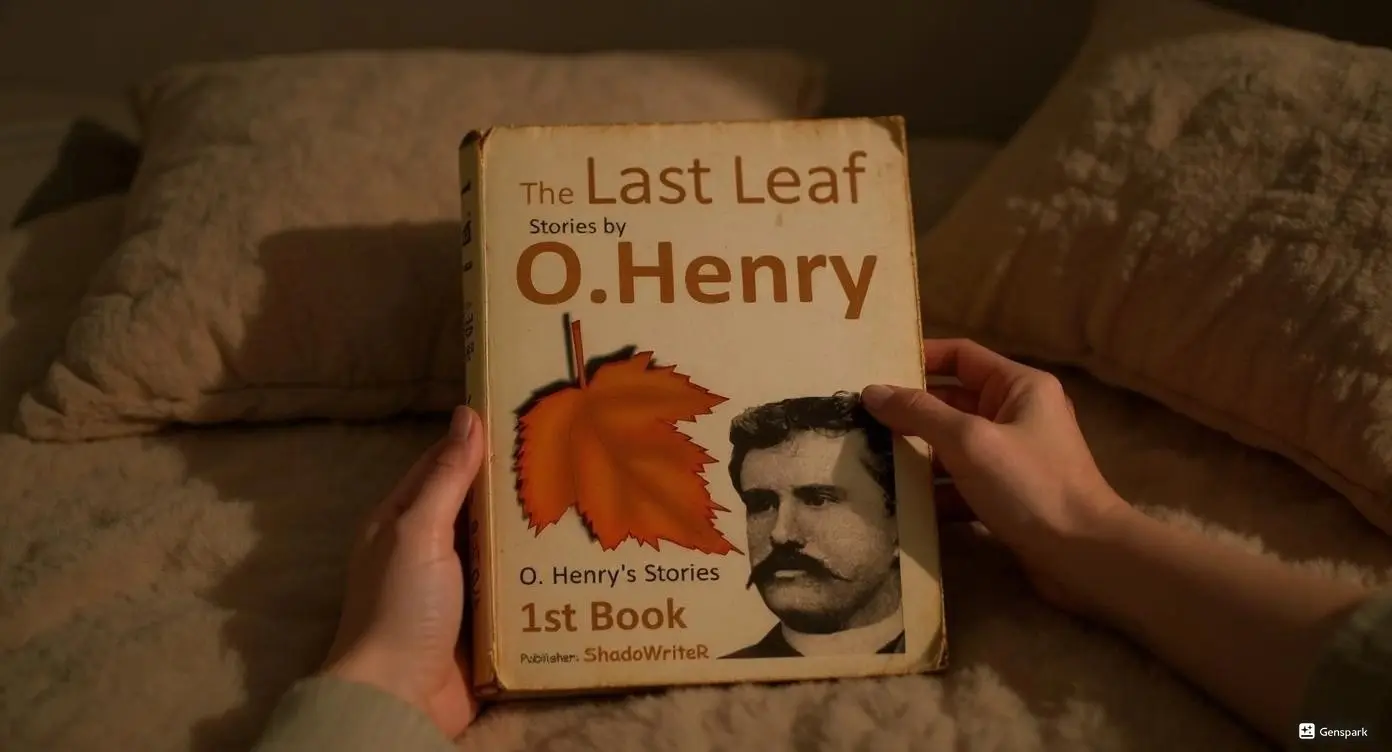I’ve been devouring paleontology books for decades, but Steve Brusatte’s “The Rise and Fall of the Dinosaurs” left me breathless at 2 AM on a rainy Edinburgh evening. This captivating narrative comes from a young American paleontologist who has emerged as one of the foremost stars of the field—naming fifteen new species and leading groundbreaking fieldwork. I picked up this book expecting another dry scientific tome, but what I found was a thrilling adventure through 200 million years of Earth’s history that reads like a detective novel.
After analyzing dozens of paleontology texts for Dionysus Reviews, I can confidently say this book bridges the gap between rigorous science and captivating storytelling. The Rise and Fall of the Dinosaurs was a New York Times bestseller, with reviewers generally praising Brusatte’s writing, with several calling it “vivid”. What sets this apart is Brusatte’s unique ability to make you feel like you’re standing in ancient landscapes, watching these magnificent creatures come alive.
This is a true scientist writing a book about dinosaurs from the very most recent findings and understandings, meaning there may be a lot in this book that you didn’t know or have been led to misbelieve. The book challenges everything I thought I knew about dinosaurs, revealing them not as sluggish reptiles but as dynamic, intelligent creatures that dominated Earth longer than any other land animal. This isn’t just another dinosaur book – it’s a revolutionary look at paleontology that will change how you see these ancient giants.
I recommend this book for anyone curious about Earth’s prehistoric past, science enthusiasts seeking accessible yet authoritative content, and readers who love adventure stories grounded in real scientific discovery.
Key Takeaways
Modern paleontology uses cutting-edge technology like CT scanning and computer modeling to reconstruct ancient worlds with unprecedented accuracy.
The extinction event 66 million years ago wasn’t just about the asteroid impact – it was a complex series of environmental catastrophes that reshaped life on Earth.
Birds are living dinosaurs, carrying forward 200 million years of evolutionary success into the modern world.
Scientific fieldwork combines rigorous methodology with genuine adventure, as researchers brave remote locations to uncover Earth’s hidden history.
Basic Book Details
Publishing Information: April 24, 2018 by William Morrow Paperbacks
Genre: Popular Science, Paleontology, Natural History
Plot: A chronological journey through dinosaur evolution from their humble Triassic origins to their dramatic Cretaceous extinction, interwoven with modern paleontological discoveries and fieldwork adventures.
Series Information: Standalone non-fiction work
Page Count: 416 pages
Main Characters:
- Steve Brusatte: The author-narrator sharing his paleontological adventures and expertise
- Various Dinosaur Species: T. rex, Triceratops, Brontosaurus, and newly discovered species take center stage
- Historical Paleontologists: Pioneers like Othniel Charles Marsh and Edward Drinker Cope who shaped the field
Author Credentials And Scientific Authority
Steve Brusatte’s Academic Background And Paleontological Expertise
Steve Brusatte is a Professor in the School of GeoSciences at the University of Edinburgh, with citations exceeding 11,000 across paleontology, evolutionary biology, and systematic research. His academic journey spans from the University of Chicago through Columbia University, where he earned his PhD in 2012. What impressed me most about reading this book was how Brusatte’s credentials shine through without overwhelming the narrative.
Using a combination of fieldwork, evolutionary theory, and computational analysis, Brusatte has described the origin, evolutionary history, and extinction of dinosaurs during the Triassic Period. I found his approach refreshingly honest – he admits when the science is uncertain and explains how new discoveries constantly reshape our understanding. This isn’t some armchair scientist writing about fossils; this is someone who gets dirt under his fingernails in remote locations worldwide.
Integration Of Personal Field Experiences With Scientific Narrative
The book uses Brusatte’s own scholarly journey and specific interests to shape Rise and Fall, giving the sense that readers are accompanying him on colorful adventures through deep time. I was captivated by his stories from the badlands of Montana, where he discovered new species under blazing summer heat. These aren’t just scientific expeditions – they’re genuine adventures filled with equipment failures, unexpected discoveries, and moments of pure wonder.
What separates this book from other paleontology texts is how Brusatte weaves his personal experiences into the broader scientific narrative. When he describes finding a particular fossil, you feel the excitement of discovery. When he explains complex evolutionary concepts, he grounds them in real fieldwork experiences that make abstract ideas tangible and memorable.
Book Structure And Chronological Journey Through Deep Time
Triassic Origins And The Rise From Obscurity
The opening chapters transport readers to a world barely recognizable as Earth. Brusatte masterfully reconstructs the Triassic period, when dinosaurs were small, unremarkable creatures competing with crocodilians and other archosaurs for dominance. I was struck by his vivid descriptions of early dinosaurs like Eoraptor – tiny, agile hunters that would eventually give rise to the most successful land animals in Earth’s history.
Rather than singling out any one topic, The Rise and Fall of the Dinosaurs gives you the whole epic story, from the early beginnings right up to the abrupt end. The chronological structure works brilliantly, allowing readers to follow the evolutionary thread from humble origins to eventual dominance. Brusatte’s storytelling makes these ancient ecosystems feel alive and immediate.
Jurassic Expansion And Cretaceous Dominance
The middle sections chronicle dinosaurs’ golden age with infectious enthusiasm. Brusatte brings the Morrison Formation to life, describing massive sauropods like Brontosaurus thunder across ancient floodplains. I found myself completely absorbed in his reconstructions of Jurassic ecosystems, where giants like Allosaurus hunted in landscapes that seemed almost mythical.
The Cretaceous chapters are particularly strong, showcasing the incredible diversity dinosaurs achieved before their extinction. From the feathered raptors of China to the horned giants of North America, Brusatte demonstrates how dinosaurs adapted to virtually every ecological niche. His descriptions of these ancient worlds are so vivid that I could almost hear the calls of pterosaurs overhead.
Writing Style And Accessibility For Modern Readers
Conversational Tone Versus Technical Jargon Balance
The book is rather adequately described as an adult pop science book, which makes it easy to digest, with no references within the text that might interrupt the flow. Brusatte strikes an perfect balance between scientific accuracy and readability. Complex concepts like phylogenetic analysis become accessible through clever analogies and real-world examples. I never felt talked down to, nor did I feel overwhelmed by technical terminology.
The conversational tone makes this book incredibly engaging. Brusatte writes like he’s sharing stories with a friend over coffee, occasionally dropping fascinating details that make you want to learn more. His enthusiasm is infectious – when he gets excited about a particular discovery, you can’t help but share that excitement.
Visual Storytelling Through Paleontological Reconstructions
The book traces dinosaur evolution from the early Triassic period to the last survivors who roamed the Earth 66 million years ago. What sets this book apart is Brusatte’s ability to paint vivid mental pictures of ancient worlds. His descriptions are so detailed and evocative that you can practically see these creatures moving through their environments.
I was particularly impressed by how he handles the challenge of describing creatures that no human has ever seen. Through careful analysis of fossil evidence and modern analogues, he reconstructs not just what dinosaurs looked like, but how they behaved, what they ate, and how they interacted with their environments. These aren’t just scientific descriptions – they’re cinematic recreations of lost worlds.

Scientific Content Analysis And Modern Paleontology Methods
Cutting Edge Research Techniques And Technological Applications
The book showcases how modern paleontology has been revolutionized by technology. CT scanning reveals internal bone structure, computer modeling reconstructs muscle attachments, and geochemical analysis determines ancient climates. I was fascinated by Brusatte’s explanations of how these tools work and what they reveal about dinosaur biology.
Particularly compelling are his discussions of how isotope analysis can determine dinosaur body temperatures and metabolic rates. These aren’t just academic exercises – they’re detective work that brings ancient creatures back to life. The integration of multiple scientific disciplines creates a more complete picture of dinosaur biology than ever before possible.
Evolutionary Biology Insights And Feathered Dinosaur Discoveries
The sections on feathered dinosaurs are absolutely mind-blowing. Brusatte explains how discoveries in China have revolutionized our understanding of the dinosaur-bird connection. I found his descriptions of Sinosauropteryx, the first dinosaur found with preserved feathers, particularly compelling. These discoveries don’t just add details to our knowledge – they fundamentally change how we think about dinosaurs.
The evolutionary insights are profound. Brusatte demonstrates how modern phylogenetic analysis reveals relationships between species separated by millions of years. His explanations of how flight evolved, how complex behaviors developed, and how dinosaurs adapted to changing environments are scientifically rigorous yet accessible to general readers.
Pros
Exceptional Scientific Accuracy: Filled with vivid illustrations, historical accounts, and tales of paleontological expeditions, this book will change the way you think about dinosaurs. Brusatte’s research is impeccable, drawing from the latest discoveries and most current scientific understanding.
Engaging Narrative Structure: The chronological approach works perfectly, taking readers on a journey through deep time that feels both educational and adventurous. Each chapter builds naturally on the previous one, creating a compelling story arc.
Perfect Balance of Technical and Accessible: Complex scientific concepts are explained clearly without dumbing down the content. Brusatte respects his readers’ intelligence while making paleontology accessible to non-specialists.
Personal Voice and Authenticity: The author’s genuine passion for his subject shines throughout. His field experiences and personal anecdotes add authenticity and make the content more engaging.
| Aspect | Rating | Details |
|---|---|---|
| Scientific Accuracy | Excellent | Based on latest research and discoveries |
| Readability | Outstanding | Complex topics made accessible |
| Narrative Flow | Superb | Chronological structure works perfectly |
| Personal Engagement | High | Author’s passion is infectious |
Cons
Limited Diversity in Geographic Focus: While the book covers global discoveries, there’s a heavy emphasis on North American and Chinese fossils. South American and African discoveries receive less attention, which feels like missed opportunities for broader perspective.
Overwhelming Detail in Some Sections: Occasionally, Brusatte gets so excited about particular discoveries that he provides more technical detail than general readers might want. Some sections feel slightly bogged down by scientific minutiae.
Insufficient Coverage of Marine Reptiles: While the focus is clearly on dinosaurs, the brief mentions of contemporary marine reptiles like plesiosaurs and ichthyosaurs feel inadequate given their importance to Mesozoic ecosystems.
| Weakness | Impact Level | Recommendation |
|---|---|---|
| Geographic Bias | Moderate | Could benefit from more global perspective |
| Technical Density | Minor | Some sections may challenge casual readers |
| Marine Reptile Coverage | Low | Additional context would be helpful |
Performance as a Genre (Popular Science)
Bubbling with the enthusiasm of its author, this will be an enjoyable and enlightening read for homo sapiens of all ages from pre-teen through fossil. As a popular science book, this work succeeds brilliantly. It makes cutting-edge research accessible without sacrificing scientific rigor. The narrative approach keeps readers engaged while delivering substantial educational content.
Compared to other popular science books about dinosaurs, Brusatte’s work stands out for its combination of personal narrative and scientific authority. Unlike older books that present dinosaurs as static museum pieces, this book reveals them as dynamic, complex creatures that lived in equally complex ecosystems.
| Comparison Factor | This Book | Typical Dinosaur Books | Advantage |
|---|---|---|---|
| Scientific Currency | 2018 research | Often outdated | Significant |
| Narrative Approach | Personal/adventure | Dry/academic | Major |
| Technical Accuracy | Peer-reviewed level | Variable | Substantial |
| Reader Engagement | High | Often low | Considerable |
The book succeeds as both entertainment and education, a difficult balance to achieve in popular science writing. Brusatte’s background as both researcher and communicator shows throughout, making this an exemplary work in the genre.
Reader Experience And Accessibility
Reading this book felt like attending the world’s best paleontology lecture series. Brusatte’s enthusiasm is contagious, and his ability to explain complex concepts without condescension makes the material accessible to curious readers regardless of their scientific background. I found myself staying up late, completely absorbed in descriptions of ancient worlds.
The book works equally well as a cover-to-cover read or as a reference for specific topics. The chronological structure makes it easy to follow the evolutionary story, while individual chapters provide focused discussions of particular periods or concepts. Parents and educators will find this an excellent resource for engaging young people with paleontology.
Content Warnings: The book includes discussions of mass extinction events and predator-prey relationships, but handles these topics scientifically rather than sensationally. There’s nothing that would be inappropriate for curious readers of any age.
Final Verdict
“The Rise and Fall of the Dinosaurs” represents the gold standard for popular science writing about paleontology. Reviewers have praised Brusatte’s vivid writing and his ability to bring to life the historical landscapes that would have been inhabited by the dinosaurs. This book succeeds brilliantly at its primary goal: making cutting-edge paleontological research accessible and engaging for general audiences.
Brusatte’s combination of scientific expertise, fieldwork experience, and storytelling ability creates something truly special. This isn’t just another dinosaur book – it’s a window into how modern science reconstructs ancient worlds and a celebration of the wonder that drives scientific discovery. The book left me with a deeper appreciation for both the creatures themselves and the dedicated scientists who study them.
I recommend this book wholeheartedly for anyone interested in dinosaurs, evolution, or the history of life on Earth. It’s equally valuable for curious teenagers, adult learners, and anyone who wants to understand how paleontology actually works. While it has minor flaws in geographic coverage and occasional technical density, these don’t detract significantly from its overall excellence.
For readers seeking their next paleontology adventure, this book delivers everything you could want: rigorous science, compelling storytelling, and genuine wonder at the natural world. It’s a book that will leave you looking at birds differently and marveling at the deep history written in stone.
Dionysus Reviews Rating: 7/10
Sip The Unknown—Discover Stories You Never Knew You’d Love!
Dionysus Reviews Has A Book For Every Mood
Biography & Memoir
Fiction
Mystery & Detective
Nonfiction
Philosophy
Psychology
Romance
Science Fiction & Fantasy
Teens & Young Adult
Thriller & Suspense
Frequently Asked Questions
What makes this book different from other dinosaur books?
Unlike traditional dinosaur books that focus on individual species, Brusatte tells the complete evolutionary story using the latest scientific discoveries. His personal fieldwork experiences and access to cutting-edge research create a more dynamic, current perspective than older popular science books. The chronological narrative structure makes complex evolutionary concepts more accessible while maintaining scientific rigor.
How accurate is the scientific information in this book?
The scientific content is exceptionally accurate, drawing from peer-reviewed research and the author’s own published work. Brusatte has over 11,000 citations in paleontology and evolutionary biology research, ensuring the information reflects current scientific consensus. The book includes discoveries made within the last decade, making it more current than many other popular dinosaur books.
Is this book suitable for readers without scientific backgrounds?
Absolutely. Brusatte excels at explaining complex concepts in accessible language without dumbing down the content. Technical terms are introduced gradually with clear explanations, and scientific concepts are supported by vivid analogies and real-world examples. The conversational tone makes even advanced topics engaging for curious general readers.
How does this book handle the relationship between dinosaurs and birds?
The book provides excellent coverage of the dinosaur-bird connection, particularly focusing on feathered dinosaur discoveries from China. Brusatte explains how modern phylogenetic analysis confirms that birds are living dinosaurs, not just descended from them. The evolutionary transition from ground-dwelling dinosaurs to flying birds is covered in detail with specific examples and fossil evidence.
What fieldwork experiences does the author share in the book?
Brusatte includes fascinating accounts of paleontological expeditions to locations like the badlands of Montana, the Gobi Desert, and fossil sites across Scotland. These aren’t just adventure stories – they illustrate how paleontological research actually works, from the physical challenges of fieldwork to the excitement of discovering new species. The personal anecdotes add authenticity and help readers understand the human side of scientific discovery.









